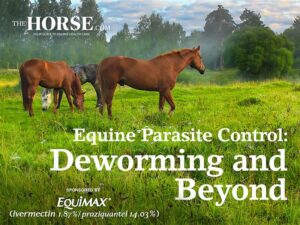Changing Trends in Equine Reproduction

Research advances in equine reproductive biology and health over the past 50 years have contributed to improved fertility and breeding efficiency in horses. The development of endocrine and ultrasonography diagnostics aids the clinician in determining potential fertility of mares and stallions. Follicular dysfunction and ovulation failure can be diagnosed with high precision in mares, embryo and fetal development can be monitored from 10 days after ovulation throughout gestation, and fetal/placental abnormalities diagnosed to identify high-risk pregnancies. In stallions, biochemical and genetic sperm abnormalities have been identified that previously remained undetected based on traditional breeding soundness examinations. Furthermore, testicular abnormalities and blood flow can be determined with high accuracy by Doppler flow ultrasonography.
The current trend in horse breeding is characterized by a decline in mares that are bred and a new focus on well-being of established pregnancies as well as enhanced genetic selection with regards to health and future performance of the foal. In addition, great advances in the area of assisted reproductive technologies offer numerous possibilities that were not available in the past.
Monitoring Healthy Pregnancy
Biomarkers for high-risk pregnancies and efficient treatments to prevent late pregnancy losses are being investigated. As new potential markers for unhealthy conditions are discovered, effective treatment options need to be developed. A similar trend is seen with regards to endometritis as well as the development of new diagnostics for dormant bacteria and uterine biofilms. While new therapeutic regimens for endometritis often include non-antibiotic alternatives or supplements, most treatment options for high-risk pregnant mares include long-term use of broad-spectrum systemic antibiotics without the possibility of performing bacterial sensitivity tests. There is a global awareness of consequences when antibiotics are overused in human as well as veterinary medicine—and equine reproduction is not an exception. An overuse of antibiotics can lead to bacterial resistance and contribute to one of the most urgent public health issues today. New trends in equine reproduction reflect these challenges to veterinary medicine, public health and the global equine breeding industry, and additional nonantibiotic treatment options need to be developed
Create a free account with TheHorse.com to view this content.
TheHorse.com is home to thousands of free articles about horse health care. In order to access some of our exclusive free content, you must be signed into TheHorse.com.
Start your free account today!
Already have an account?
and continue reading.
Related Articles
Stay on top of the most recent Horse Health news with


















